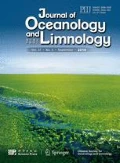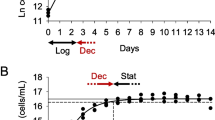Abstract
Estivation, hibernation, and starvation are indispensable inactive states of sea cucumbers Apostichopus japonicus in nature and in culture ponds. Generally, temperature is the principal factor that induces estivation or hibernation in the sea cucumber. The present study provided insight into the physiological adaptations of A. japonicus during the three types of inactivity (hibernation, estivation, and starvation) by measuring the oxygen consumption rates (Vo2) and biochemical compositions under laboratory conditions of low (3°C), normal (17°C) and high (24°C) temperature. The results show that the characteristics of A. japonicus in dormancy (hibernation and estivation) states were quite different from higher animals, such as fishes, amphibians, reptiles, and mammals, but more closely resembled a semi-dormant state. It was observed that the shift in the A. japonicus physiological state from normal to dormancy was a chronic rather than acute process, indicated by the gradual depression of metabolic rate. While metabolic rates declined 44.9% for the estivation group and 71.7% for the hibernation group, relative to initial rates, during the 36 d culture period, metabolic rates were not maintained at constant levels during these states. The metabolic depression processes for sea cucumbers in hibernation and estivation appeared to be a passive and an active metabolic suppression, respectively. In contrast, the metabolic rates (128.90±11.70 μg/g h) of estivating sea cucumbers were notably higher (107.85±6.31 μg/g h) than in starving sea cucumbers at 17°C, which indicated that the dormancy mechanism here, as a physiological inhibition, was not as efficient as in higher animals. Finally, the principle metabolic substrate or energy source of sea cucumbers in hibernation was lipid, whereas in estivation they mainly consumed protein in the early times and both protein and lipid thereafter.
Similar content being viewed by others
References
Arnold W, Heldmaier G, Ortmann S, Pohl H, Ruf T, Steinlechner S. 1991. Ambient temperatures in hibernacula and their energetic consequences for alpine marmots (Marmota marmota). J. Therm. Biol., 16: 223–226.
Battaglen S C, Seymour J E, Ramofafia C. 1999. Survival and growth of cultured juvenile sea cucumbers, Holothuria scabra. Aquaculture, 178: 293–322.
Bligh E G, Dyer W J. 1959. A rapid method of total lipid extraction and purification. Can. J. Biochem. Physiol., 37: 911–917.
Buck C L, Brian M B. 2000. Effects of ambient temperature on metabolic rate respiratory quotient, and torpor in an arctic hibernator. Am. J. Physiol. Regul. Integr. Comp. Physiol., 279: R255–R262.
Campbell H A, Fraser K P P, Bishop C M, Peck L S, Egginton S. 2008. Hibernation in an Antarctic fish: On ice for winter. PloS ONE, 3: e1 743.
Chang Y Q, Yu C Q, Song X. 2004. Pond culture of sea cucumber, Apostichopus japonicus in Dalian. In: Lovatelli A, Conand C, Purcell S, Uthicke S, Hamel J-F, Mercier A eds. Advances in Sea Cucumber Aquaculture and Management. FAO, Rome, Italy. p. 269–272.
Chen J. 2004. Present status and prospects of sea cucumber industry in China. In: Lovatelli A, Conand C, Purcell S, Uthicke S, Hamel J-F, Mercier A eds. Advances in Sea Cucumber Aquaculture and Management. FAO, Rome, Italy. p. 25–38.
Choe S. 1963. Study of Sea Cucumber: Morphology, Ecology and Propagation of Sea Cucumber. Kaibundo Publishing House, Tokyo.
Dong Y W, Tian X L, Wang F, Zhang M Z. 2006. Effects of diel temperature fluctuations on growth, oxygen consumption and proximate body composition in the sea cucumber Apostichopus japonicus Selenka. Aquaculture, 255: 514–521.
Dubois M, Gilles K A, Hamilton J K, Rebers P A, Smith F. 1956. Colorimetric method for determination of sugars and related substances. Anal. Chem., 28: 350–356.
Fish J. 1967. The biology of Cucumaria elongata (Echinodermata: Holothuroidea). J. Mar. Biol. Assoc. U.K., 47: 129–143.
Geiser F. 1988. Reduction of metabolism during hibernation and daily torpor in mammals and birds: temperature effect or physiological inhibition? J. Comp. Physiol., 158B: 25–37.
Guppy M, Withers P. 1999. Metabolic depression in animals: Physiological perspectives and biochemical generalizations. Biol. Rev., 74: 1–40.
Guppy M, Fuery C J, Flanigan J E. 1994. Biochemical principles of metabolic derpression. Comp. Biochem. Physiol., 109B: 175–189.
Jackson D C. 2002. Hibernating without oxygen: physiological adaptations of the painted turtle. J. Physiol., 543: 731–737.
Ji T T, Dong Y W, Dong S L. 2008. Growth and physiological responses in the sea cucumber, Apostichopus japonicus Selenka: Aestivation and temperature. Aquaculture, 283: 180–187.
Johanne M L, William R D. 2007. Tissue-specific changes in protein synthesis associated with seasonal metabolic depression and recovery in the north temperate labrid, Tautogolabrus adspersus. Am. J. Physiol. Regul. Integr. Comp. Physiol., 293: R474–R481.
Kates M. 1972. Lipid extraction procedures. In: Work T S, Work E eds. Techniques of Lipidology. Amsterdam, North-Holland.
Lewis J M, Driedzic W R. 2007. Tissue-specific changes in protein synthesis associated with seasonal metabolic depression and recovery in the north temperate labrid, Tautogolabrus adspersus. Am. J. Physiol. Regul. Integr. Comp. Physiol., 293: R474–R481.
Li F X, Liu Y H, Song B X, Sun H L, Gu B X, Zhang X L. 1996. Study on aestivating habit of sea cucumber (Apostichopus Janponicus Selenka): 2. The factors relating to aestivation. J. Fish. Sci. China, 3: 49–57. (in Chinese)
Liu Y A, Li F X, Song B X, Sun H L, Zhang X L, Gu B X. 1996. Study on aestivating habit of the sea cucumber Apostichopus japonicus Selenka: I. Ecological characteristics of aestivation. J. Fish. Sci. China, 3: 41–48. (in Chinese)
Milsom W K, Sanders C A, Andrade D, Abe A. 2007. Aestivation and dormany in tegu lizards. Comp. Biochem. Physiol., 148A: S82.
Nizielski S E, Billington C J, Levine A S. 1989. Brown fat GDP binding and circulating metabolites during hibernation and arousal. Am. J. Physiol. Regul. Integr. Comp. Physiol., 257: R536–R541.
Pedler S, Fuery C J, Withers P C, Flanigan J, Guppy M. 1996. Effectors of metabolic depression in an estivating pulmonate snail (Helix aspersa): whole animal and in vitro tissue studies. J. Comp. Physiol., 166B: 375–381.
Secor S M. 2005. Physiological responses to feeding, fasting and aestivation for anurans. J. Exp. Biol., 208: 2 595–2 608.
Snapp B D, Heller H C. 1981. Suppression of metabolism during hibernation in ground squirrels (Citellus lateralis). Physiol. Zool., 54: 297–307.
Snyder K S, Nestler J R. 1990. Relationships between body temperature, thermal conductance, Q10 and energy metabolism during daily torpor and hibernation in rodents. J. Comp. Physiol., 159B: 667–675.
Song X, Kortner G, Geiser F. 1997. Thermal relations of metabolic rate reduction in a hibernating marsupial. Am. J. Physiol. Regul. Integr. Comp. Physiol., 273: R2 097–R2 104.
SPSS Inc., 2001. SPSS Base 11.0 User’s Guide. SPSS Inc. Chicago.
Tanikawa E, Akiba M, Yoshitani S. 1955. Studies on the nutritive value of the meat of sea cucumber (Stichopus japonicus Selenka)- II. Seasonal changes of chemical components of the meat of Stichopus japonicus. Bull. Fac. Fish. Hokkaido Univ., 5: 341–345.
Wilz M, Heldmaier G. 2000. Comparison of hibernation, estivation and daily torpor in the edible dormouse, Glis glis. J. Comp. Physiol., 170B: 511–521.
Yang H S, Zhou Y, Wang J, Zhang T, Wang P, He Y C, Zhang F S. 2000a. A modelling estimation of carrying capacities for Chlamys farreri, Laminaria japonicus and Apostichopus japonicus in Sishiliwan Bay, Yantai. China. J. Fish. Scie. China, 7: 27–31. (in Chinese)
Yang H S, Wang J, Zhou Y, Zhang T, Wang P, He Y C, Zhang F S. 2000b. Comparison of efficiencies of different culture systems in the shallow sea along Yantai. J. Fish. China, 24: 140–145. (in Chinese)
Yang H, Yuan X, Zhou Y, Mao Y, Zhang T, Liu Y. 2005. Effects of body size and water temperature on food consumption and growth in the sea cucumber Apostichopus japonicus (Selenka) with special reference to aestivation. Aqua. Research, 36: 1 085–1 092.
Yang H, Zhou Y, Zhang T, Yuan X, Li X, Liu Y, Zhang F. 2006. Metabolic characteristics of sea cucumber Apostichopus japonicus (Selenka) during aestivation. J Exp. Mar. Biol. Ecol., 330: 505–510.
Yu D, Song B. 1999. Variation of survival rates and growth characteristics of pond cultural juvenile Apostichopus japonicus. J Fish. Sci. China, 6: 109–110. (in Chinese)
Zar H J. 1999. Biostatistical analysis. 4th edition. Prentice-Hall. New Jersey, USA
Author information
Authors and Affiliations
Corresponding author
Additional information
Supported by the National Natural Science Foundation of China (No.30400333) and the National Key Program of Science and Technology of China (2006BAD09A01)
Rights and permissions
About this article
Cite this article
Bao, J., Dong, S., Tian, X. et al. Metabolic rates and biochemical compositions of Apostichopus japonicus (Selenka) tissue during periods of inactivity. Chin. J. Ocean. Limnol. 28, 218–223 (2010). https://doi.org/10.1007/s00343-010-9016-3
Received:
Accepted:
Published:
Issue Date:
DOI: https://doi.org/10.1007/s00343-010-9016-3




